URL: https://nodegoat.uva.nl/
Projects: https://ernie.uva.nl, https://pasdarmes.org/database, https://merchantsmarks.org/database

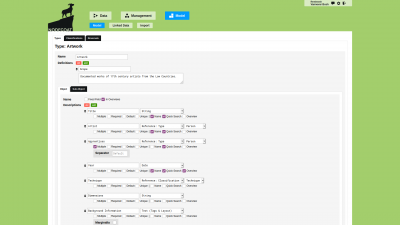
Use nodegoat to build your own data model. All of nodegoat's functionalities are tailored to your research questions.
Data Modelling
Use nodegoat to create new datasets collaboratively or alone. Explore data by means of spatial and temporal visualisations. The built-in network analysis tools reveal patterns and central nodes.
Data Creation & ExplorationUse nodegoat to publish your data in interactive visualisations, as an API, or export data publications.
Data PublicationURL: https://nodegoat.uva.nl/
Projects: https://ernie.uva.nl, https://pasdarmes.org/database, https://merchantsmarks.org/database

URL: https://nodegoat.unibe.ch/
More info: https://www.dh.unibe.ch/dienstleistungen/nodegoat_go/index_ger.html
Projects: https://rag-online.org/datenbank/abfrage, https://www.readingthebeach.unibe.ch/, https://forced-academic-migration.net/, https://nodegoat.unibe.ch/viewer.p/32, http://heloise.nodegoat.unibe.ch/viewer.p/45/2772/scenario/1/list/

URL: https://nodegoat.wesleyan.edu/
More info: https://www.wesleyan.edu/digitalscholarship/Tools.html
Projects: http://travelerslab.research.wesleyan.edu/
URL: https://nodegoat.dasch.swiss/
More info: https://rise.unibas.ch/en/news/details/nodegoat-an-der-universitaet-basel/


URL: https://nodegoat.hiu.cas.cz/
More info: https://www.hiu.cas.cz/nodegoat-go

URL: https://nodegoat.ugent.be/
More info: https://www.ghentcdh.ugent.be/services/collaborative-databases
Projects: https://www.tic.ugent.be/, https://www.gcdh.ugent.be/projects/pyramids-and-progress-belgian-expansionism-and-making-egyptology-1830-1952
URL: https://nodegoat.dhlab.lu/
Projects: https://warlux.uni.lu/, etc.


The Institute of History of the Czech Academy of Sciences organises a nodegoat Day on Wednesday 12 November 2025 in Prague. The event will include a talk by Kaspar Gubler, presentations of nodegoat projects, as well as a demonstration of new nodegoat features.
You can learn more about the event and Call for Participation here. [....]
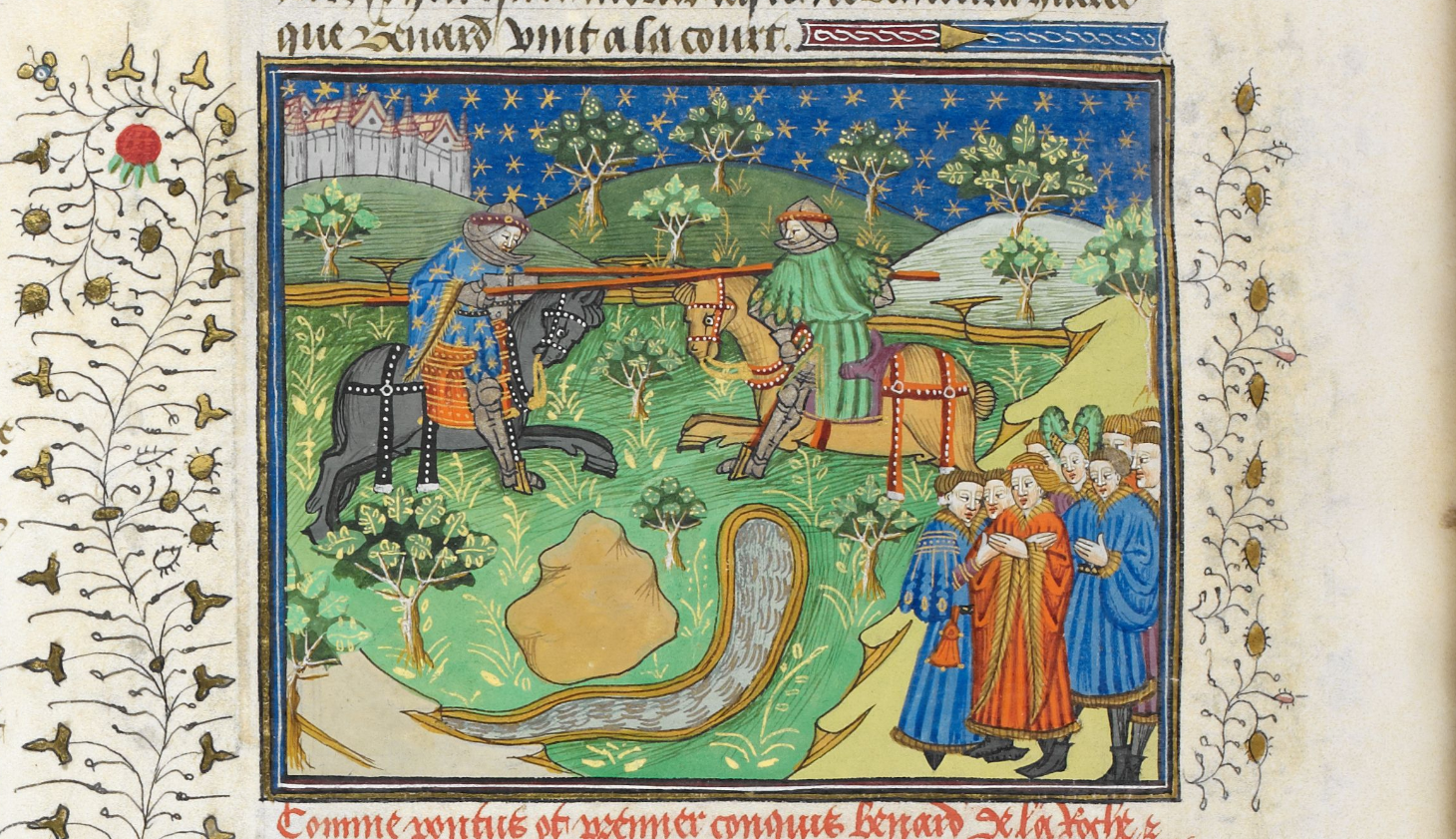
The project 'The Joust as Performance: Pas d’armes and Late Medieval Chivalry' has released a data publication that contains details of all pas d’armes held between c.1420 and c.1520. The dataset includes the following information: exact dates and locations, names of entrepreneurs and challengers, composition of teams, type of combat, theatrical scenario, ephemeral architecture, guests and spectators. The data can be downloaded via this link and had been published in both JSON and CSV formats. The database was created by Mario Damen, Jacob Deacon, and other team members in nodegoat. The publication was generated by means of the nodegoat Data Publication Module.
Scholars who want to explore this data by means of an interface may consult the database that has been published on the project website. These results have also been published in an open-access book.
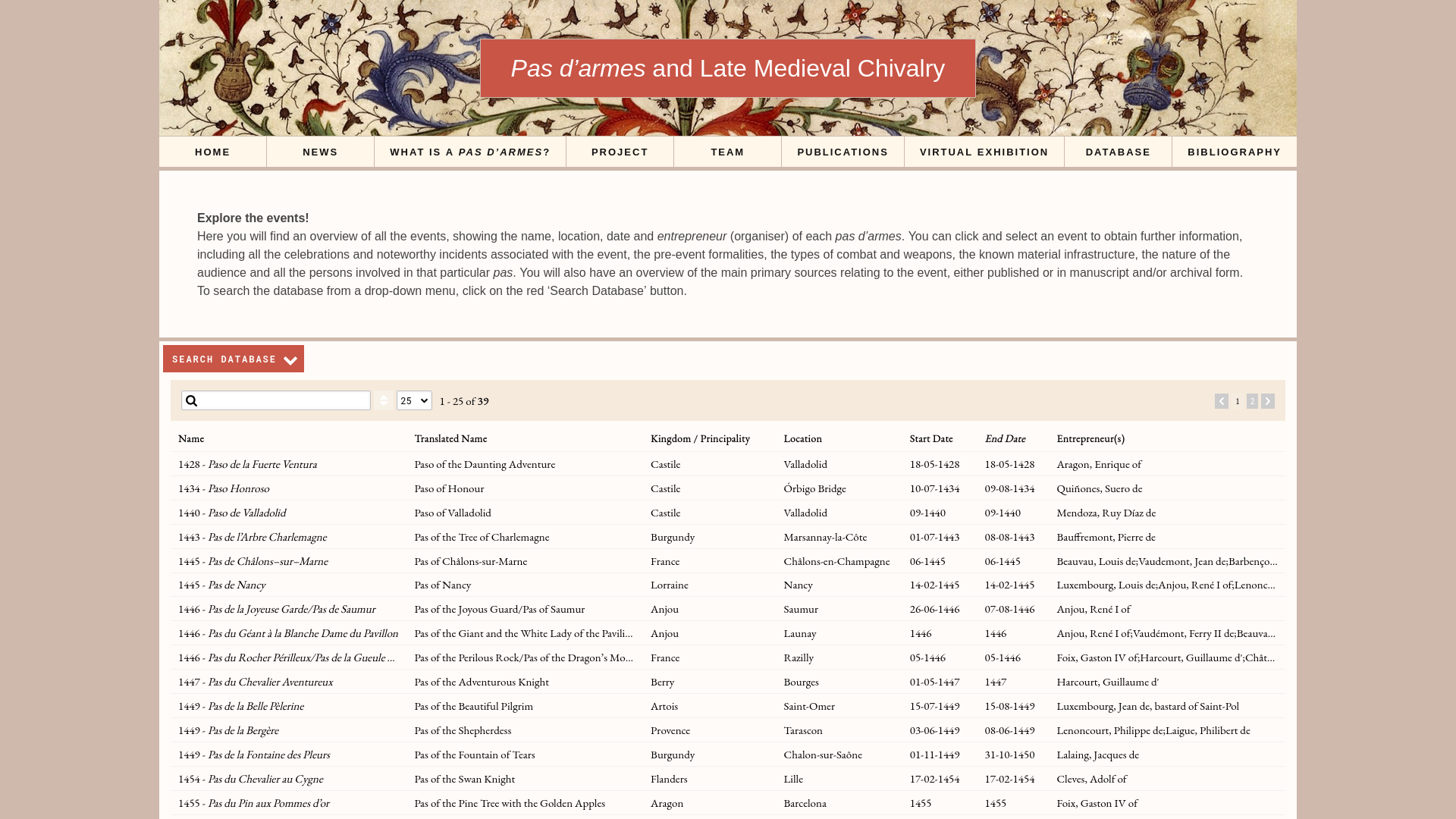
The project also created a virtual exhibition in order to share the results of the project with a wider audience.[....]

Join us next week in the Aula Magna of the Biblioteca Universitaria di Bologna for a public lecture on nodegoat "Working with nodegoat: an Introduction to Historical Data Analysis and Visualisation". The public lecture takes place on Thursday March 6 between 10:00 and 12:00.

The Österreichisches Archäologisches Institut of the Österreichische Akademie der Wissenschaften organises a nodegoat workshop on Thursday 20 March between 09.30 and 17.00 in Vienna. You can learn more about the event and registration process here.
Thanks to Nirvana Silnovic for organising this event.
Two opportunities to learn more about using nodegoat for your research projects!

On January 22 we will organise a nodegoat workshop together with the GRACPE project (Grup de Recerca sobre l'Arqueologia de la Complexitat i els Processos d'Evolució social) at the Faculty of Geography and History, University of Barcelona. The venue will be Sala Jane Adams (Carrer de Montalegre, 6) and the workshop will take place on January 22 between 9AM and noon. The entry is free and no registration is needed. For further information please contact: sd.prehistoria.arqueologia@ub.edu
Thanks to Maria Del Rocio Da Riva Muñoz for organising this event.

On January 23 we will organise a nodegoat workshop together with the project 'Narremas y Mitemas: Unidades de Elaboración Épica e Historiográfica' at the Facultad de Filosofía y Letras, Universidad de Zaragoza. The venue will be Sala de Grados (Pedro Cerbuna, 12) and the workshop will take place on January 23 between 4PM and 7PM. More info and registration: https://eventos.unizar.es/127926/detail/nodegoat-workshop-an-introduction-to-a-web-based-research-environment-for-the-humanities.html
Thanks to Celia Delgado Mastral and Marta Añorbe Mateos for organising this event.
Publish your project with the new data publication module. nodegoat users can now select any project to generate a data publication that is web-accessible and downloadable as a ZIP-file. By generating a new publication a Project's data model and all of its data are published and archived. The publication remains accessible also when new publications are generated at a later stage.
Publications are stand-alone self-containing archives which include both the HTML-interface to the data model as well as all of its data in both JSON and CSV.

This new publish feature extends the existing data extraction and data publication options, i.e.: the export functionality, the API, and the public user interface.[....]

Join us on April 11 between 10:00 and 13:00 for a nodegoat workshop at the Centre for Digital Humanities of the Universitat Pompeu Fabra (UPF-DH) in Barcelona. The workshop is organised as part of the "Premodern Digital Textualities" series. This is an in-person event. You can find more about the workshop via this link and you can register here.
Thanks to Marija Blašković for organising this event.[....]
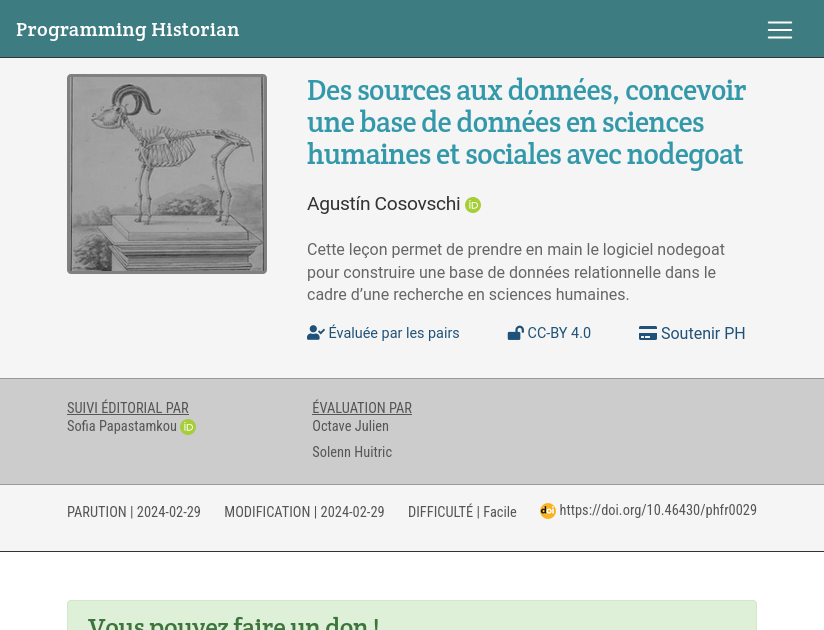
Nous sommes ravis d'annoncer que la ressource en ligne "The Programming Historian en français" a publié une leçon sur la conceptualisation d'une base de données à l'aide de nodegoat : Des sources aux données, concevoir une base de données en sciences humaines et sociales avec nodegoat.
La leçon a été rédigée par Agustín Cosovschi, édité par Sofia Papastamkou et évalué par Octave Julien et Solenn Huitric.[....]
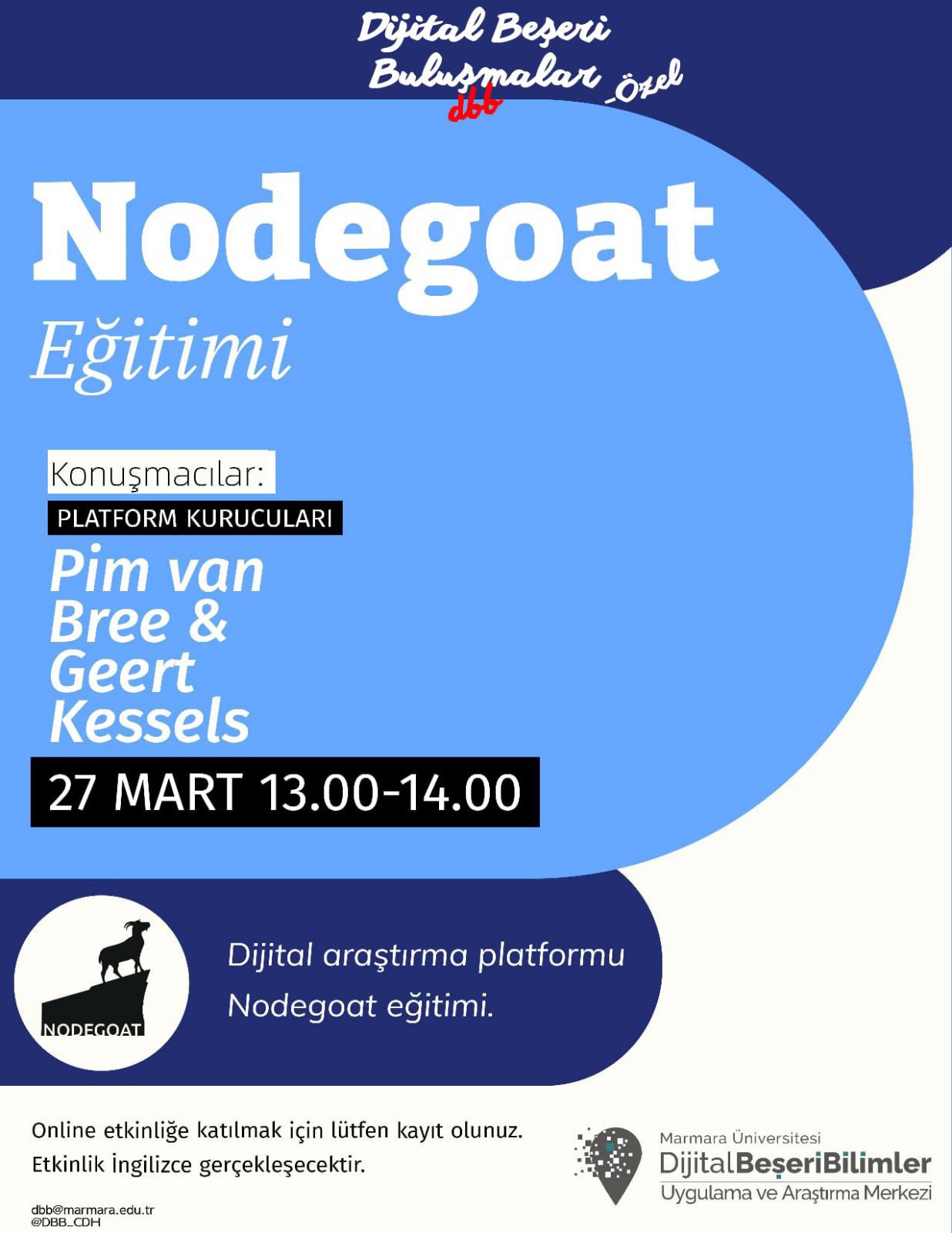
The Dijital Beşeri Bilimler Uygulama ve Araştırma Merkezi of Marmara Üniversitesi organises a nodegoat demonstration on March 27 between 13:00 and 14:00 (GMT+3). You can read more about this here and register via this link.
Their platform 'Inside Digital Humanities' recently published an article on how to use nodegoat for your research project: Nodegoat.net Sosyal ve Beşeri Bilimler için. Web Tabanlı ve Veri Girişinden Sonuçların Görselleştirilmesine. Kapsamlı Dijital Araştırma Ortamı (in English).[....]
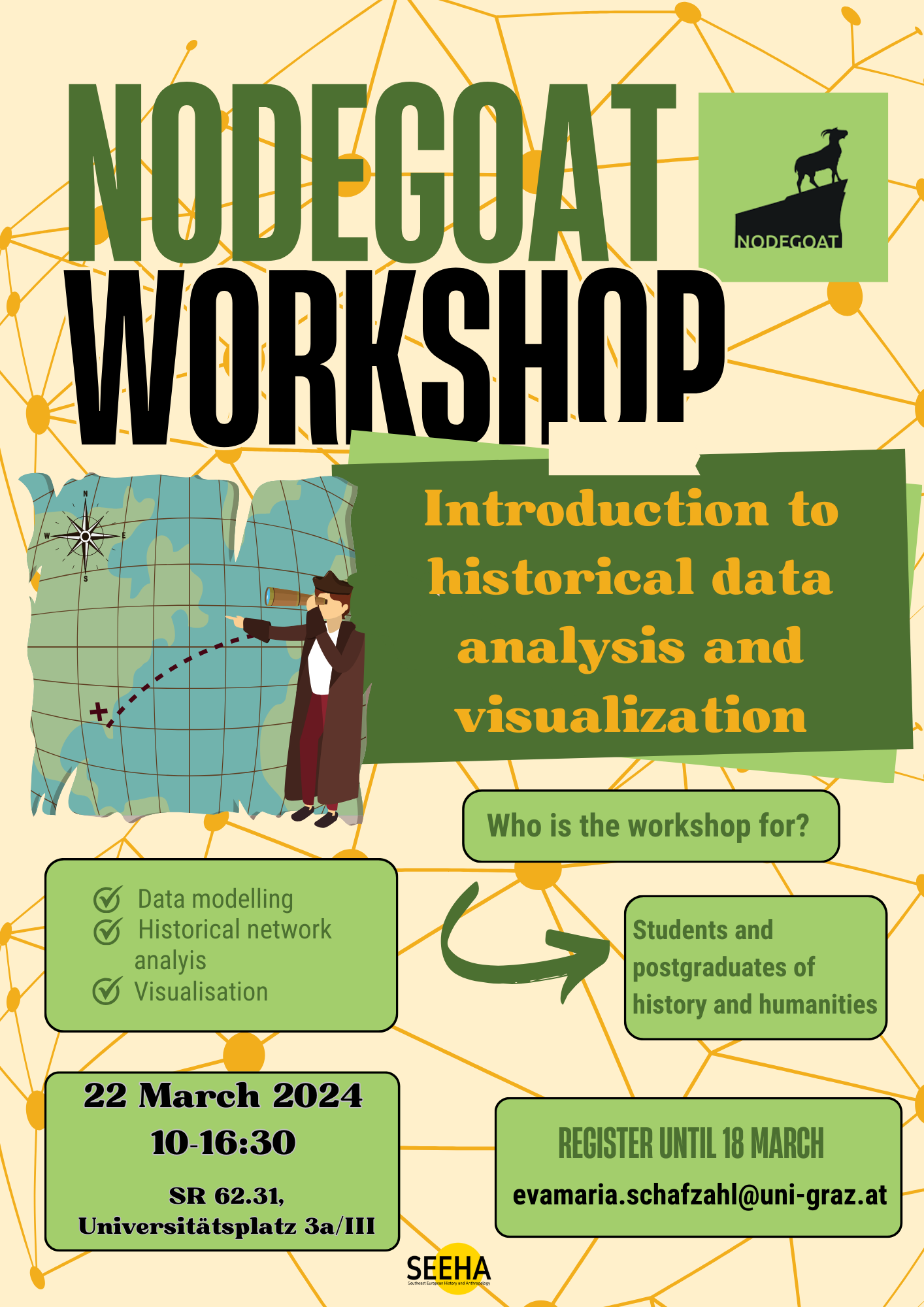
Together with the department of Southeast European History and Anthropology at the University of Graz we will run a workshop with the title ‘Introduction to historical data analysis and visualisation’ on Friday 22 March 2024. The workshop takes place between 10:00 and 16:30. This is an in-person event and registration is required. Registration deadline is 18 March.
The Institute of History of the Czech Academy of Sciences organises a nodegoat Day on Wednesday 12 November 2025 in Prague. The event will include a talk by Kaspar Gubler, presentations of nodegoat projects, as well as a demonstration of new nodegoat features.
New use case by Pierluigi Terenzi (University of Florence) on the LASI project that analyses workers and decisions related to the Opera di Santa Maria del Fiore in the second half of the 14th century.

Blog post about a data publication: "Pas d'armes" and Late Medieval Chivalry

The Centre for Digital Humanities of Utrecht University organises an introductory nodegoat workshop on 28 March 2025 between 14:00 and 17:00. Location: University Library (Drift 27), room 0.21. More info and registration via this link:
nodegoat in the Aula Magna della Biblioteca Universitaria di Bologna 🙌

nodegoat 8.4 is here: https://nodegoat.net/release 🔥🐐
#nodegoat Job Alert! Research Associate in the field of Digital Humanities (f/m/d) within the project “H-DIARIES. The first testimonies of the Holocaust written by Jewish victims. Analysis, inventory, mapping”
Public lecture on nodegoat on Thursday March 6 between 10:00 and 12:00 in the Aula Magna of the Biblioteca Universitaria di Bologna: "Working with nodegoat: an Introduction to Historical Data Analysis and Visualisation".

The Österreichisches Archäologisches Institut of the Österreichische Akademie der Wissenschaften organises a nodegoat workshop on Thursday 20 March between 09.30 and 17.00 in Vienna. You can learn more about the event and registration process here: https://www.oeaw.ac.at/oeai/veranstaltungen/event-detail/nodegoat-workshop-introduction-to-historical-data-analysis-and-visualisation.

Last week we had two fruitful nodegoat workshop sessions at the University of Barcelona, organised by the GRACPE research group.

 |
 Geographic visualisation of biographies of scholars. Tobias Winnerling (Heinrich-Heine-Universität Düsseldorf), project: "Wer Wissen schafft. Gelehrter Nachruhm und Vergessenheit 1700 – 2015". |
 Social Network Graph of the network around Dutch engineer Cornelis Meijer. Project: "Mapping Notes and Nodes in Networks". |